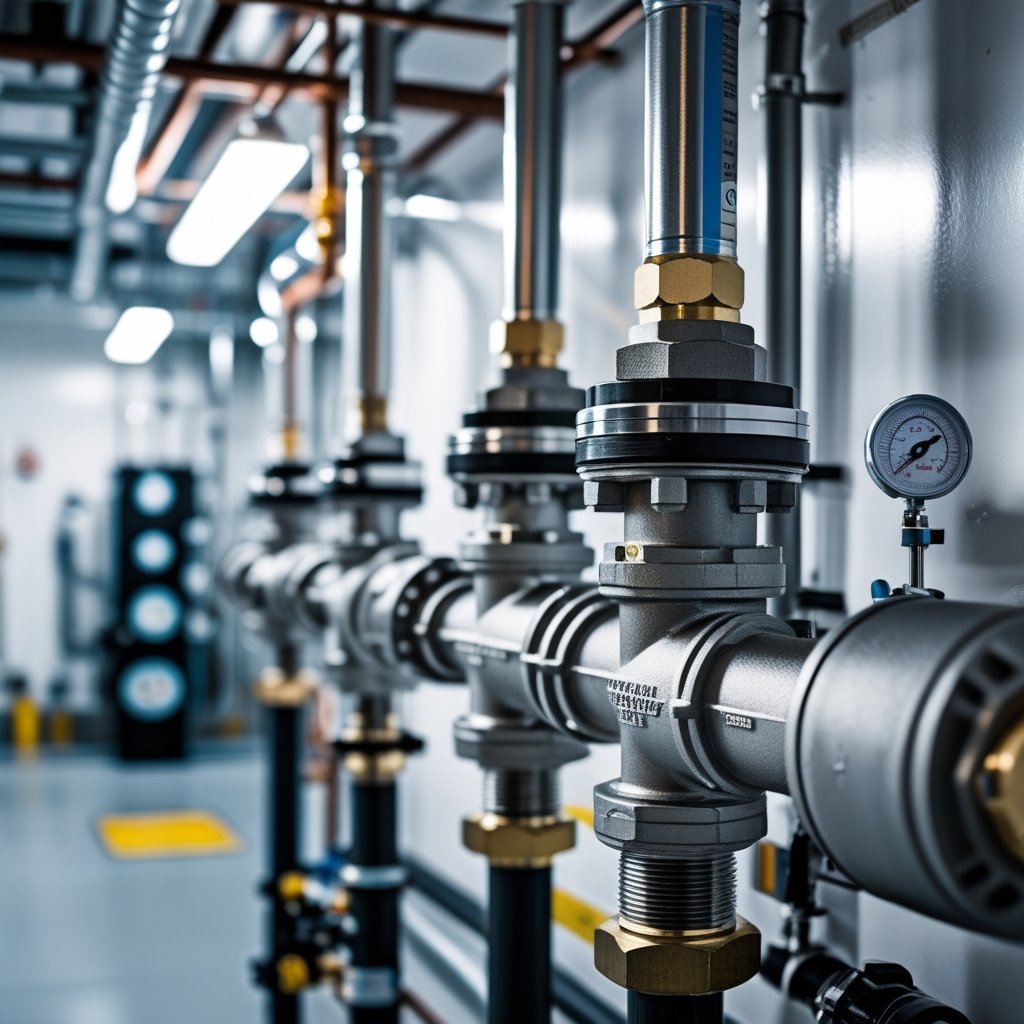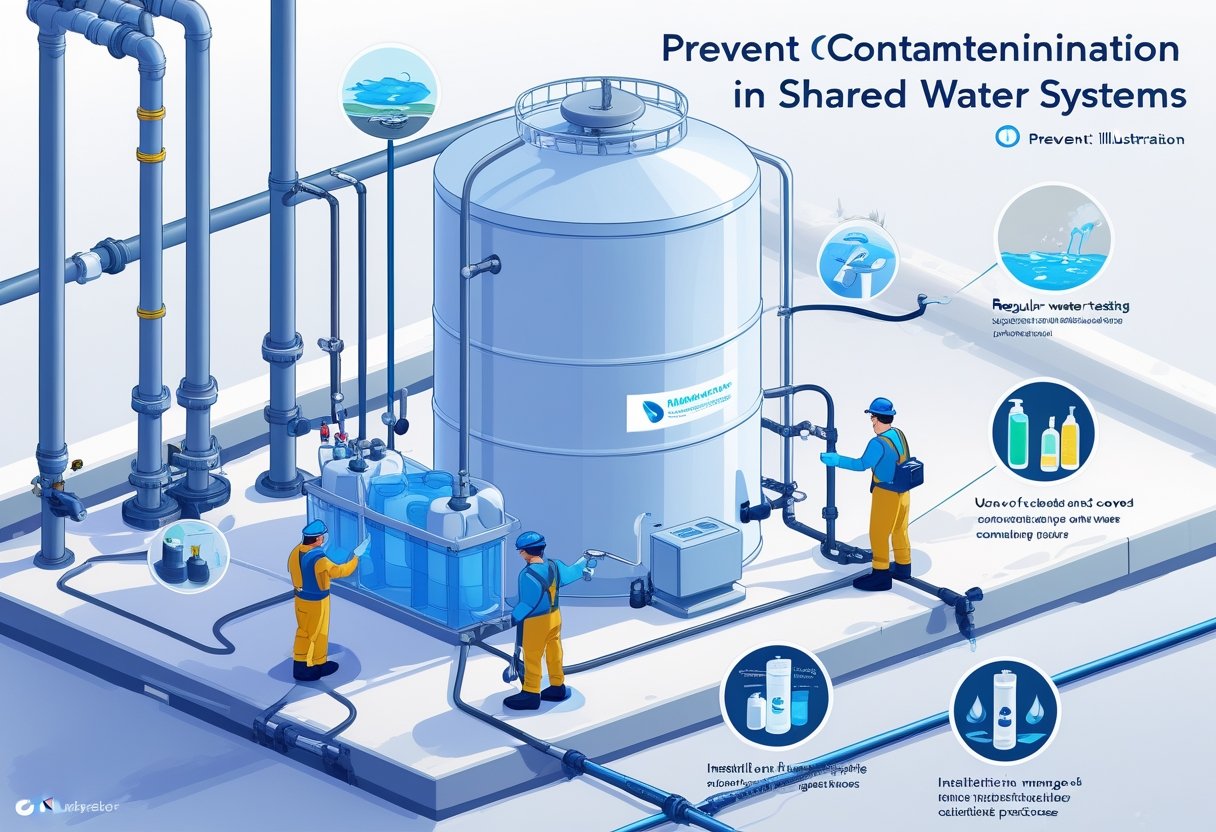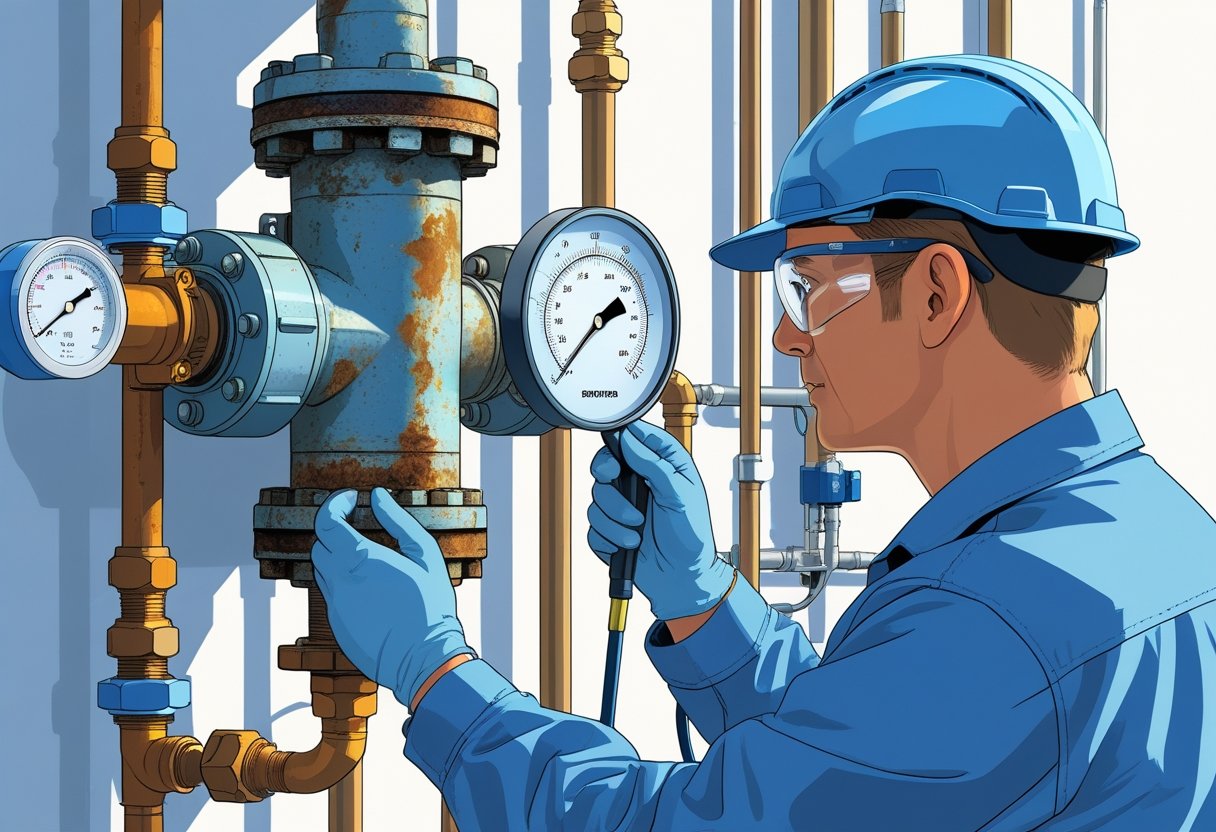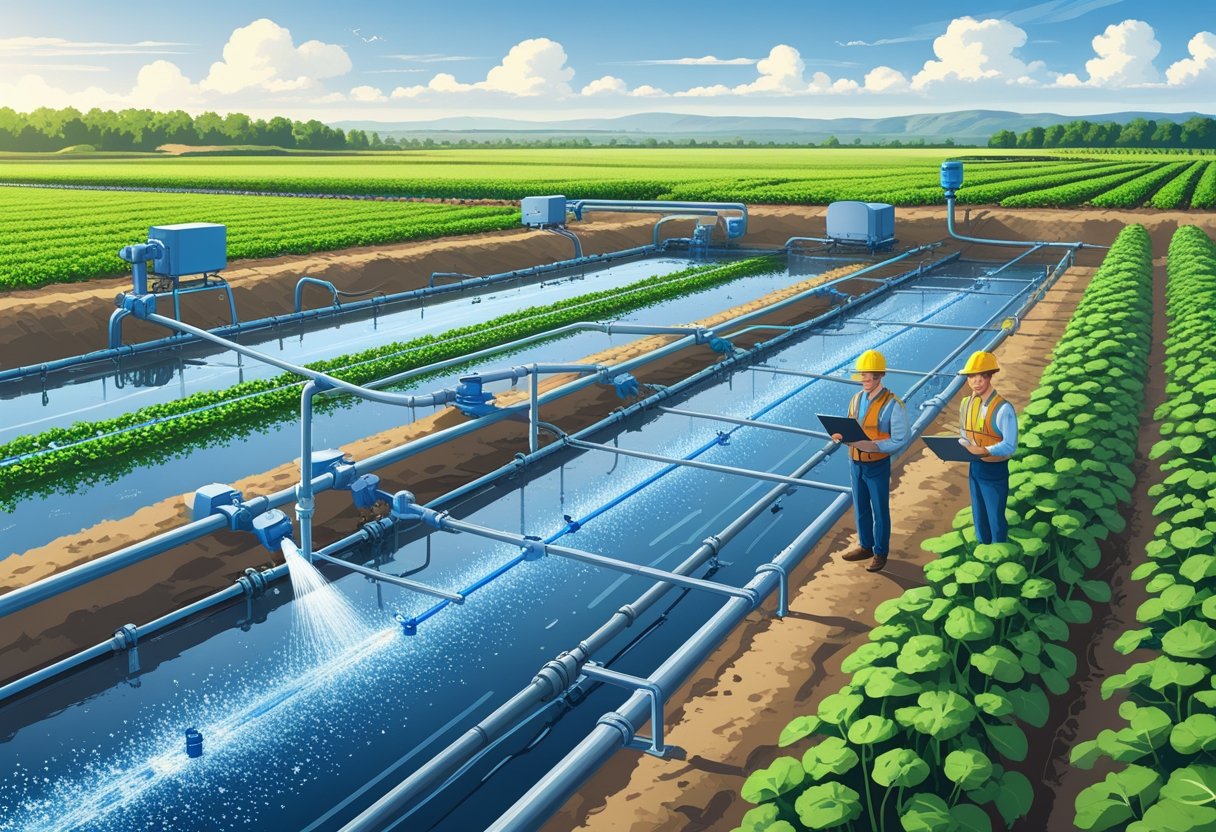Are backflow preventers required on all properties? Not every property needs a backflow preventer, but many homes, especially those with irrigation systems, pools, or boilers, do require one by local codes to keep your water safe. This device stops dirty water from flowing back into your clean water supply, protecting your family’s health.
Local rules can be all over the place. Some places require backflow preventers for certain water connections, so it’s smart to check what applies to your property. At Pacific Backflow, we serve all of San Diego County and help folks stay safe and compliant with quick, reliable testing, repairs, and installations.
If you’re not sure whether your place needs a backflow preventer or how often to test it, stick around. Understanding these rules might save you from fines and water headaches, and protect your water supply.
What Are Backflow Preventers?
Backflow preventers keep dirty or non-potable water from sneaking back into your clean water lines. They’re built to make water flow one way—into your home, not back out. You’ll see these devices where there’s a risk of contamination, like with irrigation systems, pools, or anywhere weird plumbing setups might exist.
How Backflow Preventers Work
Backflow preventers let water flow into your property but slam the door shut if water tries to reverse. They use valves or pressure differences to keep things moving the right way. If your main water pressure drops—maybe during a water main break or heavy use—backflow can happen. The preventer senses this and blocks the reverse flow, protecting your drinking water from nasty stuff.
Regular testing is a must to make sure your preventer is actually working. You’ll want a certified tech to check and maintain it, so your water stays safe and your system stays up to code.
Types of Backflow Preventers
There are a few main types. The double check valve works for low-risk situations. It’s got two valves to stop water from backing up.
For higher-risk spots, like where chemicals or fertilizer might be around, there’s the reduced pressure zone (RPZ) device. It’s got a relief valve that dumps pressure and stops backflow more effectively.
You’ll also see pressure vacuum breakers (PVBs), which use an air gap and a valve to stop back siphonage. Each type is designed for different risks and requirements.
Common Applications
Backflow preventers pop up all over. If you’ve got irrigation, a pool, or a boiler, you probably need one. Fire sprinkler systems and commercial buildings almost always have these devices too.
Not all homes need them, but if there’s even a chance for water to mix and cause contamination, local codes often make them mandatory. If you’re in San Diego County, Pacific Backflow can install and test them so you’re safe and following the rules.
Legal Requirements for Backflow Preventers
Backflow preventers keep your water safe by blocking dirty water from getting into clean lines. The rules about these devices depend on where you live and what kind of building you have.
National Plumbing Codes
National plumbing codes lay out the basics for backflow preventers. They say you need a device anywhere there’s a risk of contaminating the public water supply.
Codes like the Uniform Plumbing Code (UPC) and International Plumbing Code (IPC) have sections on backflow prevention. You’ll need approved devices for irrigation, pools, and boilers. The whole point is to keep water from flowing backward and bringing in pollutants.
Following these national codes keeps you on the right side of safety rules, but sometimes local rules are even stricter.
Local & State Regulations
Local and state governments can pile on their own rules, depending on the risks in your area and your property type.
Your city or county might require annual backflow testing, especially for commercial buildings or homes with irrigation or pools. Some places want tests every two years. If your property has pipe connections or uses water in ways that could cause backflow, the rules almost always apply.
If you ignore local laws, you could get fined or even lose water service. That’s why people often work with companies like Pacific Backflow to stay compliant and keep their water safe.
Key Compliance Standards
To play it safe and meet legal demands, you should:
- Install backflow preventers where codes or your water district require them.
- Get your device tested regularly by a certified tester, usually once a year.
- Repair or replace anything that fails testing.
- Keep records of your tests and repairs, and send them to your local water authority if they ask.
These standards protect public health and your water supply. Taking care of your devices also helps them last—sometimes up to 20 years. Staying on top of the rules saves you hassle and keeps your water safe.
Are Backflow Preventers Required on All Properties?
No, not every property needs a backflow preventer. It really comes down to your property’s features and local laws. Some places absolutely require them to keep water safe.
Residential Properties
Not every home must have a backflow preventer. You’ll usually need one if you have irrigation, a pool, or a boiler—these things can let contaminated water back into your clean supply.
Many local rules say you need a device if your plumbing has potential cross-connections to public water. Municipalities often require annual testing to make sure it works. If your home doesn’t have those risk factors, you might not need a backflow preventer at all.
Commercial Properties
For commercial buildings, backflow preventers are almost always a must. These places have more complex plumbing and more chances for dirty water to flow backward.
You’re on the hook for installing, testing, and maintaining these devices. Skip it, and you might face fines or lose water service. Testing usually happens once a year and has to meet strict standards, including pressure and relief valve checks.
Industrial Properties
Industrial sites? The requirements are even tougher. If there’s any way hazardous stuff could get into the public water supply, you’ll need backflow preventers everywhere that risk exists.
Regular inspections and fast repairs are non-negotiable here. The safety of your staff, the environment, and the whole community depends on these devices working right. Industrial properties have to follow water district codes to the letter.
If you’re in San Diego County, Pacific Backflow can handle your testing, repairs, and installations to keep your water system safe and legal.
Exceptions and Exemptions
Some properties don’t need backflow preventers. Certain buildings and temporary setups get to skip these devices, depending on local rules. Knowing if you qualify can save you hassle and money.
Specific Property Types
You might not need a backflow preventer if your property is pretty basic—no irrigation, no boilers, no pools. Homes with no connections that could contaminate the water supply are usually off the hook.
But if you add irrigation systems, pools, or boilers, then you’re likely required to have one. Commercial and industrial buildings almost never get exemptions, thanks to higher contamination risks.
Cities in San Diego County all have their own quirks, so it’s best to check with your local authority. If you’re not sure, Pacific Backflow can help you figure it out.
Temporary or Special Use Cases
Temporary setups—like construction sites or event spaces—sometimes don’t need backflow preventers. It usually depends on how long the setup lasts and whether there’s a real risk of contamination.
Seasonal irrigation might be exempt in the off-season, but only if you follow the right steps to shut down or protect the system. Local water districts call the shots here.
If your situation is out of the ordinary, double-check with your water authority. Getting advice from Pacific Backflow can help you avoid fines and keep your water safe.
Risks of Not Installing Backflow Preventers
Skipping a backflow preventer puts you at risk for two big problems: water contamination and legal trouble. Understanding these risks—well, it makes the decision a lot clearer, doesn’t it? Installing the right device just makes sense for your safety and peace of mind.
Water Contamination Hazards
Without a backflow preventer, dirty water can flow back into your clean supply. If water pressure drops, harmful chemicals, bacteria, or waste can sneak into your drinking water.
This isn’t just gross—it’s dangerous. You, your family, and your neighbors could get sick. Common contamination sources? Think irrigation systems, pools, or boilers hooked up to your plumbing.
Backflow preventers keep water moving the right way. Without one, you’re way more likely to end up with waterborne illnesses or toxic chemicals in your tap.
Legal and Financial Penalties
In many places, including San Diego County, you’re required to have backflow preventers and test them regularly. Skip this, and you could get fined or even lose water service.
If you don’t maintain or install a device, you might have to pay for emergency repairs or higher fees. Annual testing is usually the law, and businesses often have to test even more. Pacific Backflow can help you stay compliant, handle the testing, and deal with the paperwork—so you don’t have to stress about legal stuff.
Inspection and Maintenance Requirements
Keeping your backflow preventer in shape means regular inspections and testing by certified professionals. You’re responsible for making sure inspections happen on time and repairs get done quickly. Good maintenance protects your water and keeps you in line with local rules.
Inspection Schedules
You need to test your backflow preventer at least once a year. This annual schedule is the law in lots of places, for all kinds of properties—homes, businesses, irrigation, you name it. If your device fails, you’ve got to fix or replace it right away.
Between inspections, it’s smart to check for leaks or visible issues yourself. Keep maintenance records for at least three years. These records prove you’re following the rules and help track repairs or changes.
Certified Testing Procedures
Only certified testers can legally inspect your backflow preventer. They use calibrated tools to make sure your device actually works and keeps contaminated water out.
If your preventer doesn’t pass, the tester will suggest repairs or a replacement. You should get on that fast to avoid contamination and fines. Pacific Backflow serves San Diego County with quick, reliable testing, and they’ll even file your reports so you don’t have to deal with the paperwork.
Choosing and Installing a Backflow Preventer
Picking the right backflow preventer and making sure it’s installed correctly is key to keeping your water safe. Think about what type fits your property, and make sure installation follows local codes so you don’t run into problems down the road.
Selecting the Right Device
Picking the right backflow preventer really depends on your water system’s risk level and whatever the local rules say. Got irrigation, a pool, or a boiler? You’re probably looking at needing a more advanced device.
Here are a few common types:
- Atmospheric Vacuum Breaker (AVB) – Works well for low-risk, straightforward setups like basic sprinkler systems.
- Pressure Vacuum Breaker (PVB) – Handles spots where water pressure isn’t always steady.
- Double Check Valve Assembly (DCVA) – Good for moderate risk, often what you’ll find in neighborhoods.
- Reduced Pressure Zone (RPZ) – This one’s for high-risk areas, like commercial buildings or places with hazardous stuff in the mix.
Just make sure your backflow preventer’s certified and meets your local water district’s standards. That keeps your water safe, and you won’t run into any surprise fines.
Professional Installation Tips
Honestly, it’s best to have a pro handle the installation. Certified plumbers know the codes and make sure everything works—and passes inspection.
Before you start, check with your water district to see if they have any special requirements. Where you put the device matters too. You want it somewhere easy to reach for testing or repairs, but also protected from weather and accidental bumps.
After it’s in, you’ll need to get it tested every year. That’s how you know it’s still doing its job and keeping you compliant. Pacific Backflow, for example, handles testing, repairs, and even emergencies all over San Diego County. Handy if you’re in the area.
Frequently Asked Questions
Backflow preventers really do a lot to keep water safe. The rules can be different for homes, businesses, or irrigation. People often wonder about costs, or where these devices actually go.
What does the code say about requiring backflow preventers for residential properties?
Most places require backflow preventers for homes, especially if you’ve got irrigation or anything that could push water the wrong way. It’s about keeping your drinking water clean.
Are commercial properties obligated to install backflow preventers?
Yep, commercial properties almost always have to install them. It’s about preventing contamination and keeping water safe for everyone in the building.
How does the requirement for backflow preventers differ for irrigation systems?
Irrigation setups usually need specific backflow preventers to stop fertilizers or chemicals from sneaking back into your main water. Local rules decide which type, and you’ll need to get them tested regularly.
Can you explain the clearance requirements for backflow preventer installations?
You need space around a backflow preventer so it’s easy to test and maintain. Usually, that means a few feet on every side, but check your local codes for the exact numbers.
Is it necessary to have a backflow preventer on my garden hose, and why?
Honestly, yes. Putting a backflow preventer on your garden hose keeps dirty water from the hose or sprinkler out of your home’s clean water. It’s a simple way to keep your water safe.
StepAction Check local requirementsFind out if your property needs a backflow preventerTest annuallySchedule testing to keep your system compliantMaintain and repairFix or replace devices when neededUse trusted serviceWork with experts experienced in backflow prevention
Got questions? Don’t be shy about reaching out to a professional for advice or service. It’s your water, after all—worth keeping it clean for yourself, your family, and everyone else.
What are the typical costs associated with installing a commercial backflow preventer?
Prices jump around depending on the size and type of device you need. For most commercial spaces, you’ll probably pay a few hundred bucks just for installation. Then there’s the yearly testing and maintenance—those add up, too. If you’re in San Diego County, Pacific Backflow can help you nail down a real quote and sort out the details.











